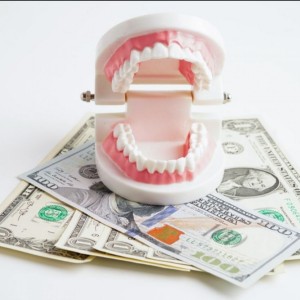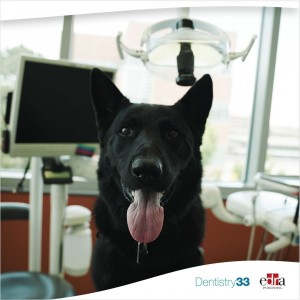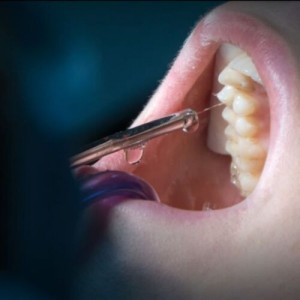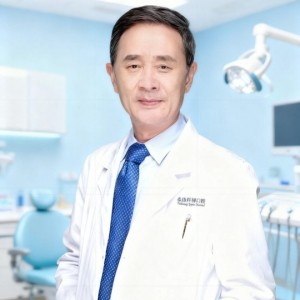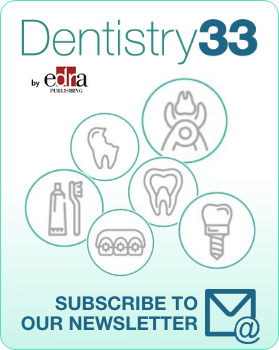
New Report Examines Barriers to Oral Health Services for New Yorkers
A new report, released by the Center for Health Workforce Studies (CHWS) at the University at Albany’s College of Integrated Health Sciences, indicates that improving access to oral health services in New York State requires a broader understanding of oral health needs and the challenges that underserved populations face. The study, conducted by CHWS and funded by the Schuyler Center for Analysis and Advocacy, examined factors identified by New York State consumers that affected their access to oral health services and explored differences in utilization of those services by sociodemographic groups.
Researchers extracted data from the January and June 2022 waves of the Consumer Survey of Health Care Access by the American Association of Medical Colleges. Forty-three percent of New York respondents reported facing major access barriers. Compared to respondents nationwide, a higher proportion of New Yorkers experienced access barriers such as finding a dentist who accepted their plan, transportation issues, and locating dental care.
“Lack of access to dental care is a major issue for some New Yorkers, especially in rural areas where dentist supply is low and there’s limited or no public transportation,” said Jean Moore, director of CHWS. “And then once people find a dentist, which could be an hour away from where they live, their dental insurance may not be accepted. This is often how minor dental issues escalate to become dental emergencies—because individuals can’t get access to basic preventive services in the first place.”
Other identified access barriers—such as financial constraints, lack of dental insurance, and difficulties in finding providers who accept Medicaid or offer the needed services—continue to disproportionately affect certain demographic groups, including racial and ethnic minorities, low-income individuals, and rural residents.
“This new data confirms the tremendous unmet need for preventive and routine oral health services in areas of New York State, especially for New Yorkers with low incomes,” said Kate Breslin, president and CEO of the Schuyler Center. “Poor oral health and dental pain impact a person’s ability to live a full life, and a lack of access to oral health care is a matter of health equity. Later this year, the Schuyler Center will be releasing recommendations on policy solutions to promote oral health equity, especially in the high-need populations identified in this report. Central to those solutions is bolstering the oral health workforce.”
About the Center for Health Workforce Studies
Established in 1996, CHWS is an academic research organization based at the College of Integrated Health Sciences, University at Albany, State University of New York. The mission of CHWS is to provide timely, accurate data and conduct policy-relevant research about the health workforce.
The research conducted by CHWS supports and promotes health workforce planning and policymaking at local, regional, state, and national levels. Today, CHWS operates 2 of 9 federally funded health workforce research centers in the U.S. and is a national leader in the field of health workforce studies.
About the Schuyler Center for Analysis and Advocacy
The Schuyler Center for Analysis and Advocacy is a leading statewide, nonpartisan policy analysis and advocacy organization based in Albany, NY. The Schuyler Center works to shape policies to improve health, well-being, and human services for all New Yorkers, especially children and families impacted by poverty and inequitable systems.
Source: www.scaany.org
 Related articles
Related articles
News 23 May 2025
New Report: People with Disabilities Face Major Barriers to Accessing Oral Health Care
According to new data released by CareQuest Institute for Oral Health, adults with disabilities face major barriers to accessing oral health care and are at greater risk for poor oral health...
This report provides insight into Cigna Group’s tech activities, including its digital transformation strategies, innovation programs, technology initiatives, estimated ICT budget, and major ICT...
Products 03 July 2024
New Report: Lower-Income Families Spend 7 Times More on Dental Care Than Wealthier Families
Revealing deep health disparities based on income, a new CareQuest Institute for Oral Health report shows that poorer families paid 7.4 times more in out-of-pocket expenditures for dental care...
According to a newly released report from the National Institutes of Health, good oral health is important for the overall health and well-being of individuals of all ages, their families,...
Pediatric dentistry 24 April 2023
By Matthew Hastings, University of Colorado Anschutz Medical Campus News
Lexi Dunnells, a dental student, found a statistically significant decrease in pulse for the patient group that had Ziggy the dog present from the beginning of the appointment to their pulse reading...
 Read more
Read more
Editorials 10 October 2025
With proud smiles and crisp white coats, ninety-three learners from the DDS Class of 2029 and the International Dentist Pathway Class of 2028 marked the start of their dental careers at the UCSF...
Periodontology 10 October 2025
Continuous professional development (CPD) in Periodontology refers to the overall framework of opportunities that facilitate a life-long learning practice, driven by the learner-practitioner and...
TheraBreath, the #1 alcohol-free mouthwash brand in the U.S.*, has introduced a new line of dentist-formulated, clinically tested toothpastes designed to support professional oral care...
News 10 October 2025
New officers and trustees were installed at the Minnesota Dental Association’s Leadership Conference on September 19 in Minneapolis.
News 10 October 2025
Smartee Denti-Technology today announced that Professor Gang Shen, its Chief Scientist and Executive President of TaiKang ByBo Dental, has once again been named to the World’s Top 2% Scientists...


.png)


